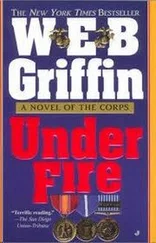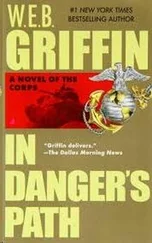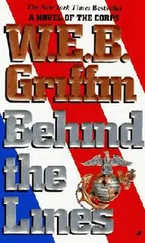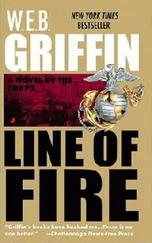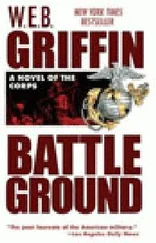W Griffin - The Corps I - Semper Fi
Здесь есть возможность читать онлайн «W Griffin - The Corps I - Semper Fi» весь текст электронной книги совершенно бесплатно (целиком полную версию без сокращений). В некоторых случаях можно слушать аудио, скачать через торрент в формате fb2 и присутствует краткое содержание. Жанр: prose_military, на английском языке. Описание произведения, (предисловие) а так же отзывы посетителей доступны на портале библиотеки ЛибКат.
- Название:The Corps I - Semper Fi
- Автор:
- Жанр:
- Год:неизвестен
- ISBN:нет данных
- Рейтинг книги:4 / 5. Голосов: 1
-
Избранное:Добавить в избранное
- Отзывы:
-
Ваша оценка:
- 80
- 1
- 2
- 3
- 4
- 5
The Corps I - Semper Fi: краткое содержание, описание и аннотация
Предлагаем к чтению аннотацию, описание, краткое содержание или предисловие (зависит от того, что написал сам автор книги «The Corps I - Semper Fi»). Если вы не нашли необходимую информацию о книге — напишите в комментариях, мы постараемся отыскать её.
The Corps I - Semper Fi — читать онлайн бесплатно полную книгу (весь текст) целиком
Ниже представлен текст книги, разбитый по страницам. Система сохранения места последней прочитанной страницы, позволяет с удобством читать онлайн бесплатно книгу «The Corps I - Semper Fi», без необходимости каждый раз заново искать на чём Вы остановились. Поставьте закладку, и сможете в любой момент перейти на страницу, на которой закончили чтение.
Интервал:
Закладка:
And then the Doggie armorer loaned him his own Garand. What the hell, even if he was a Doggie, they had things in common. The Doggie armorer was a master sergeant, the same rank as Stecker, and he'd done a hitch with the 15th "Can Do" U.S. Infantry in Tientsin, 1935-38. And they knew about rifles. Stecker and the Doggie armorer had more in common with each other than Stecker had with the kids fresh from Parris Island involved in the troop test.
So first they had a couple of beers together at the NCO Club, and then the Doggie invited him to his quarters for supper, and the next morning, the Doggie armorer handed him a Garand and told him he'd "done a little work on it." What he'd done was a really good job on the trigger, and the action was really smooth, and he'd taken chisels to the stock and cut away all the wood, so the barrel was free floating, and (he wasn't sure if Stecker would like this) he'd replaced the rear sight with one he'd rigged up with an aperture about half as big as issue.
The first time Stecker fired the Doggie's Garand-at two hundred yards-when they marked the target and hauled it up again, there was only one spotter (Bullet holes in rifle targets are marked with circular cardboard disks, white if the hole is in the black of the bull’s-eye, and black for holes elsewhere on the target. A peg in the center of the disk is inserted in the bullet hole. A bullet strike is thus visible from the firing line) on it, a white one, but only one.
"Have them re-mark that goddamned target!" Stecker demanded, angry and embarrassed. He had fired two loose rounds and an eight-round clip at that target, and apparently hit it only once.
The Doggie corporal on the field phone to the pits ordered the target re-marked, and it disappeared into the pits. It came back up a minute later with just the one white spotter, and Stecker felt humiliation sweep through him. "Two and a quarter," the Doggie corporal sang out. "What the hell does that mean?" Stecker asked. There was no such terminology in the Corps.
"That means, Sarge," the corporal said tolerantly, "that you put them all into just over two inches. Not bad!"
Stecker was so pleased (and to tell the truth of it, so relieved) that he'd put ten rounds into an area smaller than a spotter-which was damned near minute of angle (One inch at 100 yards. Two inches at 200 yards, etc)-that he didn't even jump the Doggie corporal's ass for calling him "Sarge."
That would have been good shooting even with Stecker's own personal Springfield, which he privately believed was as accurate as any Springfield in the Corps.
That was when he began to change his evaluation of the Garand. Obviously, when properly tuned, the ugly sonofabitch would shoot. Which was the important thing. And being absolutely fair and objective about it, which is what he was supposed to be as the NCOIC of the Marine Troop Test, you could get back on target after the recoil faster than you could with a Springfield. Like it or not, the gas-operated mechanism of the Garand ejected a round and chambered another faster than even a master gunnery sergeant of the Marine Corps could work the bolt of a Springfield.
And there was more to think about. Not only were the Marine marksmen doing well with the Garand - the sergeants and corporals who knew something about shooting - but the kids from Parris Island, too. They didn't, he realized, have a hell of a lot to unlearn. They just took the Garand and learned how to use it.
He didn't easily give in to admitting that the Garand was actually a fine weapon, though. For instance, he surprised hell out of a squad of the kids by ordering them not to detail strip their pieces when the day's firing was over.
"Just run a couple of patches, first bore cleaner, then oil down the bore. Don't brush the bore. I want to see how much it will take to jam it."
It was three days of firing before the first Garand jammed.
That night, he ordered the squad to detail strip and clean their Garands but not to reassemble them. When all the parts were clean, he ordered the kids to put them all together in a pile on the deck of the barrack.
The kids thought he was really nuts then, and even more so when he stepped up to the pile and stirred the parts around with his toe. One of the claimed merits of the Garand was interchangeability of parts. This was a good way to find out.
"Now put them together," he ordered. He stood watching as the kids assembled rifles.
"I don't want anybody exchanging parts after I'm gone," he said. "I'm trying something."
There was only one malfunction of the squad's Garands the next day, a stovepipe (When the action fails to eject a fired cartridge case properly and jams it in place with the open end erect, it is known as a "stovepipe") he suspected was a freak. He proved this by firing three clips through the rifle as quickly as he could and without further failure to eject.
Master Gunnery Sergeant Stecker returned from Fort Benning one of the few people in the Corps who believed the Garand was the best infantry rifle to come down the pike in a long time. He was worried then not about whether the Garand would be good for the Corps, but when-or even whether- the Corps would get it. The Army would take care of itself first, of course. The Corps would probably wind up with the Army's worn-out Springfields rather than new Garands.
Captain Jack NMI Stecker, USMCR, was therefore pleased when the first Garands were issued to the Corps. There were not enough of them to go around, of course, but the door was open. For the moment, unfortunately, there were only enough of them to equip a few detached units, and for instructional purposes.
Captain Stecker read with interest the reports of scores fired with the new rifle by the students of the battalion; and he was not happy with the results from either the commissioned officers at their annual qualification at Quantico or of the kids in the Platoon Leader's Course. He decided first to see what was wrong with the training of the Platoon Leader candidates and fix that, and then he'd see that the same fix was applied to the abbreviated training course given the officers before they fired their annual qualification.
At 0805, which was late enough for the firing on the known distance range to be well under way, he got up from his desk and walked out of his office.
"Come with me, son," he said to the S-3's jeep driver, a small, very neat PFC trying to make himself inconspicuous on a chair in the outer office.
As he invariably did when he went for a ride in the jeep with a PFC at the wheel, he thought about how much he'd liked it better when he'd been a master gunnery sergeant with the pickup and didn't have to sit like a statue on an uncomfortable pad in the jeep.
In the center of the line of Known Distance Rifle Range #2 (where the Platoon Leader Candidates were firing for record), there was a small clutter of buildings surrounding the range master's tower. Next to the buildings, several vehicles were parked with their front wheels against yellow-painted logs half-buried in the sand. There were two jeeps (one assigned to range NCO and the other to the range officer), two pickups, and a three-quarter-ton Dodge weapons carrier, which had brought the ammo from the dump. Two ambulances (new ones, built on the Dodge three-quarter-ton weapons carrier chassis) were backed up against the logs.
Stecker told the driver to park the jeep beside the weapons carrier. When he stopped, Stecker removed his campaign hat and took from the crown a small glass bottle, which once contained Bayer Aspirin. He took from it four globs of what looked like wax at the end of short pieces of string and handed two of them to the PFC.
"Here," he said to the driver. "Stick these in your ears." "What is it, sir?" the PFC asked doubtfully. "Genuine Haiti Marine earplugs," Stecker said. "Do what | I tell you."
Читать дальшеИнтервал:
Закладка:
Похожие книги на «The Corps I - Semper Fi»
Представляем Вашему вниманию похожие книги на «The Corps I - Semper Fi» списком для выбора. Мы отобрали схожую по названию и смыслу литературу в надежде предоставить читателям больше вариантов отыскать новые, интересные, ещё непрочитанные произведения.
Обсуждение, отзывы о книге «The Corps I - Semper Fi» и просто собственные мнения читателей. Оставьте ваши комментарии, напишите, что Вы думаете о произведении, его смысле или главных героях. Укажите что конкретно понравилось, а что нет, и почему Вы так считаете.

